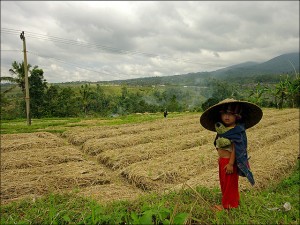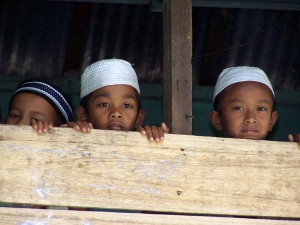
Last month I wrote a post telling the horrific stories of Ferdi, Volario, and Suroso and their personal accounts of being forced into slave labor on oil palm plantations in Indonesia. Some escaped after months without pay. Others were paid less than 40 cents/day for back-breaking work clearing forests and spraying pesticides.
Through visiting many controversial palm oil plantations and meeting with partners on the ground, my eyes were opened to the slavery that is a chilling reality of the global palm oil trade that, it turns out, is all-too common.
And now the United States Department of Labor is quite concerned, too.
Recently, palm oil cultivated in Indonesia was added to the U.S. Department of Labor’s list of goods produced by child labor or forced labor.
According to the report, “Child labor’’ under international standards means all work performed by a person below the age of 15. “Forced labor’’ under international standards means all work or service that is exacted from any person under the menace of any penalty for its nonperformance. Under these definitions, Ferdi is a victim of child labor and all three men I interviewed were victims of forced labor on palm oil plantations.

The International Labor Rights Forum is collaborating with RAN to spread the word about slave labor on palm oil plantations with the message: “Don’t Let Cargill Profit from Slave or Child Labor in Palm Oil.” Cargill’s 2008 revenues soared to over $120 billion, with palm oil being one of the company’s most important commodities. Meanwhile, underage children and indentured laborers are working in Indonesia’s palm oil industry for pennies.
There is definitely something wrong with this picture.